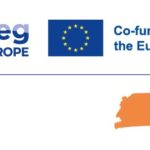Policy support, project, process, network; preparatory phase; planned duration: up to 5-10 years
Submitted by / EUSDR Priority Area(s): PA 2 Sustainable Energy
The Flagship will coordinate actions to foster the development of hydrogen economies in the EUSDR countries at a macro-regional level building on synergies of the national actions and the favourable natural/geographical conditions of the EUSDR (e.g. areas of excellent potentials for green hydrogen production from renewables, tremendous transport facilities: either natural, such as the Danube River, or artificial such as the extended gas infrastructures, etc.). It will analyse the entire hydrogen value-chain (production, transport/storage, end-uses) at a macro-regional level in a comprehensive way in order to make policy recommendations on how to adjust the different strengths/opportunities (e.g. production and transport capacities) and visions (e.g. various end-use development scenarios) at national levels into a transnational context, thus facilitating the development of a fully operational macro-regional hydrogen economy. The analyses will be done by an international expert team from and beyond the EUSDR countries (network) and will be disseminated – also in the form of policy recommendations – via different international workshops, policy conferences, etc.
The Flagship will also foster project generation (including IPCEI projects) in the hydrogen topic, and label selected successful project as flagships. Such first candidate is the project called HyEfre (Driving green hydrogen and efficient renewables integration for a balanced and sustainable central European energy system via targeted entrepreneurial and policy decision-making support) which has been submitted to Central Europe Programme (decision expected in December 2022).
Objectives
To become climate-neutral by 2050 – in line with the European Green Deal – Europe needs to transform its energy system, which accounts for 75% of the EU’s greenhouse gas emissions. This is also especially relevant for the EUSDR countries, which energy systems are often more outdated and fossil fuel-dependent compared to West Europe. Hydrogen – as an energy vector – can support the decarbonisation of industry, transport, power generation and buildings, and can power sectors that are not suitable for electrification, furthermore it can play a systemic role in the transition to renewable energy sources by providing a mechanism to flexibly transfer energy across sectors, time, and place. This wide-ranging potential of hydrogen provides excellent opportunities for the EUSDR countries to move their energy systems and economies further along the decarbonisation pathways according to their national potentials. The Flagship’s objective is to promote the development of a fully operational macro-regional hydrogen economy through different actions (macro-regional analyses, policy recommendations, dedicated workshops and policy conferences, successful projects, etc.). Hydrogen is an innovative and emerging low-carbon technology, thus the activities directly contribute to the fulfilment of the EUSDR Action Plan.
Need and (expected) impact
Hydrogen economies – though getting an increasing importance in the EUSDR countries – are at their infancy (except for Austria, Bavaria and Baden-Württemberg) compared to the western part of Europe. Only five countries have national hydrogen strategies (Germany, Austria, Czech Republic, Slovakia and Hungary) and are in preparation at various stages in the other EUSDR countries. The different priority topics are defined at national levels according to their economic interests and possibilities and thus have a great variety among the countries (e.g. countries with existing gas pipelines and underground gas storage capacities prioritise the retrofitting of these infrastructures along gas blending with hydrogen and hydrogen storage). Nevertheless, these national strategies lack transnational aspects on how to match the different “puzzles” of the entire hydrogen value chain (production, transport/storage, end-uses) defined at national levels into a coherent macro-regional vision of a fully integrated and efficient energy system, where the amounts of produced (green) hydrogen is fulfilling the demand of various end users.
Macro-regional dimension
All EUSDR countries are cooperating and the expected impacts are relevant to all cooperating countries.
Stakeholders involved
national hydrogen clusters /associations, industry partners from the entire hydrogen value chain, academia, policy- and decision makers, authorities.
Budget and Funding
Flagship projects with their own budgets (potential sources: centrally managed European programmes (Horizon Europe, LIFE Clean Energy Programme, Connecting Europe Facility Programme, etc.), Interreg Transnational Programmes (DRP, CE)
Flagship other process/network activities: est. EUR 10.000/year (source: PAC project)
Further information & Contact
PAC, Ms Annamária Nádor (annamaria.nador@mfa.gov.hu)

>> Download Certificate 2022 <<
>> Download Certificate 2023 <<


